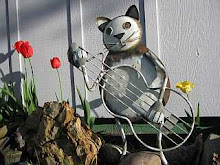This got me thinking about dangerous jobs, who does them, and an effort by some people to link differing male and female dominated occupations in an effort to legislate equal pay to close the pay gap between men and women. For example, someone would decide the skill set in a female dominated job like teacher, secretary, librarian, etc. would have the same skill set as in a male dominated job like logger, construction worker, etc. They feel the same skill set should mean the same pay for the different jobs.
 What is left out of this equation is the danger level of different jobs. One can't argue against the idea that many male dominated jobs are more dangerous than female dominated jobs. One can look at the U.S. Department of Labor, Bureau of Labor Statistics, 2006 ranking of fatalities by occupation to see that male dominated jobs are much more dangerous than female dominated jobs.
What is left out of this equation is the danger level of different jobs. One can't argue against the idea that many male dominated jobs are more dangerous than female dominated jobs. One can look at the U.S. Department of Labor, Bureau of Labor Statistics, 2006 ranking of fatalities by occupation to see that male dominated jobs are much more dangerous than female dominated jobs.The image to the right lists the top 10 dangerous jobs in 2002. The list changes slightly each year, but you get the idea. Male dominated jobs are more dangerous. This is born out by the fact that according to a Center for Disease Control (CDC) study,
The risk of work-related death was much greater for males than for females; the age-adjusted death rate for males was 5.0 deaths per 100,000 U.S. standard population compared with 0.4 for females, resulting in a mortality ratio of 12.5.Twelve and a half times more likely for a man to die on the job than a woman. Some articles I have read in the past put the percentage of male vs. female deaths on the job at 90% or more for men.
According to another CDC article a breakdown on the causes for female fatalities are robbery, which is unrelated to the skill necessary to perform the job.
Homicide is the leading cause of injury death for women in the workplace, accounting for 40% of all workplace death among female workers. Workplace homicides are primarily robbery-related, and often occur in grocery/convenience stores, eating and drinking establishments, and gasoline service stations. Over 25% of female victims of workplace homicide are assaulted by people they know (co-workers, customers, spouses, or friends). Domestic violence incidents that spill into the workplace account for 16% of female victims of job-related homicides.One can't argue against "equal pay for equal work", but the pay gap between men and women, and the job skill sets used, are far more complicated than declaring equal pay for what is considered to be equivalent jobs.


No comments:
Post a Comment